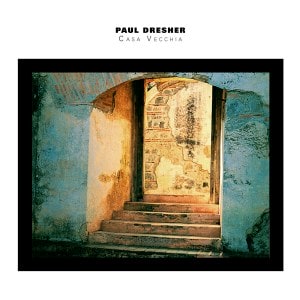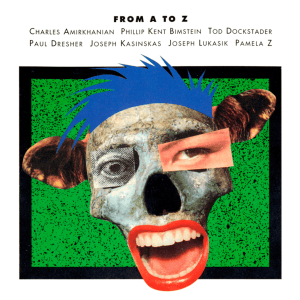★★★★
Paul Dresher’s music compellingly draws from a broad spectrum of sources, including contemporary classical music, rock, minimalism, and his years of study of the classical musics of India, Africa, and Indonesia.
This CD presents the premiere recording of one of Dresher’s strongest and most engaging works. Commissioned and premiered by the Kronos Quartet, Casa Vecchia (performed here by Vienna’s Ensemble 9) offers a striking, convincing blend of the best elements of minimalism within an evolving, cohesive structure. In his introduction, John Diliberto writes that “There’s a solemnity… that recalls the contemplative paths of Górecki and Pärt.” He then comments on the work’s euphoric climax:
“Casa Vecchia builds slowly and relentlessly over 20 minutes of arcing melodies until the high speed compression at the end appears like a sling-shot acid rush, breaking through to the other side.”
Some excerpted comments from Dresher’s notes provide further insight into the piece:
“Casa Vecchia… was composed in the summer of 1982 while residing outside a small village on the west coast of Tuscany, Italy. The specific neighborhood was known locally as ‘Casa Vecchia’ because it contained the ancestral home, now in ruins, of the former overlord of the region. The piece is built upon a single twelve-note diatonic phrase (or row, or cycle) whose specific note to note structure may be varied by a few arbitrary rules determined by the composer. All the sections of the work use the material of the row or its transformations. Each section is defined and differentiated by a different polyphonic or contrapuntal structure. Seen from this perspective, the work may be considered a kind of variation set… Performing the work as a double quartet was entirely idea of the conductor, Yuki Morimoto. He sent me a recording of his group, Ensemble 9, performing it this way, and it clearly was an excellent transformation of the work.”
The CD opens with the hypnotic Underground, which originally appeared on Starkland’s compilation CD, From A to Z. “Atmospheric and otherworldly” (CMJ), it is perhaps Dresher’s most ambient work. He writes:
“Underground… was created and performed on a multi-track tape loop system designed for live performance and built by myself and electronic technician Paul Tydelski. This system consists of a four-channel tape machine with three playback heads located at various points in the path of a single closed loop, all controlled by the performer with an array of foot pedals and switches. The system allows a single performer to develop complex harmonic, polyphonic or polyrhythmic material without requiring the use of pre-recorded tapes… The work was recorded in a single ‘live’ take.”
The infectious Mirrors, performed by Bang on a Can’s Robert Black, deftly generates, weaves, and layers electronically processed materials within a virtuosic, real-time performance. Dresher offers some history of this piece:
“Mirrors, for Steinberger bass and electronics, was commissioned by Robert Black. For several years Robert had been requesting I compose a work for him… After I saw him give a virtuoso performance and when he asked me to compose a work for electric bass and electronics, I felt I could find a way to develop a piece. I was given an extended loan of a Steinberger instrument which I immediately fell in love with, and I met with Robert and surveyed in detail his techniques on both the electric and acoustic bass, as well as the various opportunities presented by his particular set of electronics. Early in the process, I made the decision to continue my nearly religious interdiction against using pre-recorded tape and to focus entirely in creating a work that is performed ‘live.’ I have written this piece as much as possible in the spirit of my own solo works…”
Other Fire skillfully processes and combines environmental sounds into an evocative soundscape. Dresher writes:
“Other Fire emerged from eight months traveling throughout South and Southeast Asia, with no particular goal other than to see in their own cultural contexts the musics which I had been studying and listening to for the past twelve years. These travels took me to India, Sri Lanka, Nepal, Burma, Thailand, Malaysia, Singapore, Indonesia, Hong Kong and Japan. The tape recorder was running much of the time, recording sounds of both urban and rural environments and performances ranging from concert halls to all-night shadow plays to street musicians. The tapes languished until 1984 when I received a commission from the Olympic Arts Festival for a work for radio to be broadcast during the Festival which ran concurrently with the Olympic Games in Los Angeles. This seemed an ideal context to explore the material in these tapes; there are no synthesized sounds in the work. The tapes were processed by a harmonizer, delay lines, graphic equalizers, and the tape loop system described above. After the resulting 25-30 hours of new tapes were catalogued, various sequences were selected, assembled onto an 8-track recorder, and mixed to the final stereo version heard here.”
Fanfare’s review concludes that this “Starkland release is an excellent introduction… [to] a significant emerging voice in American music.”









